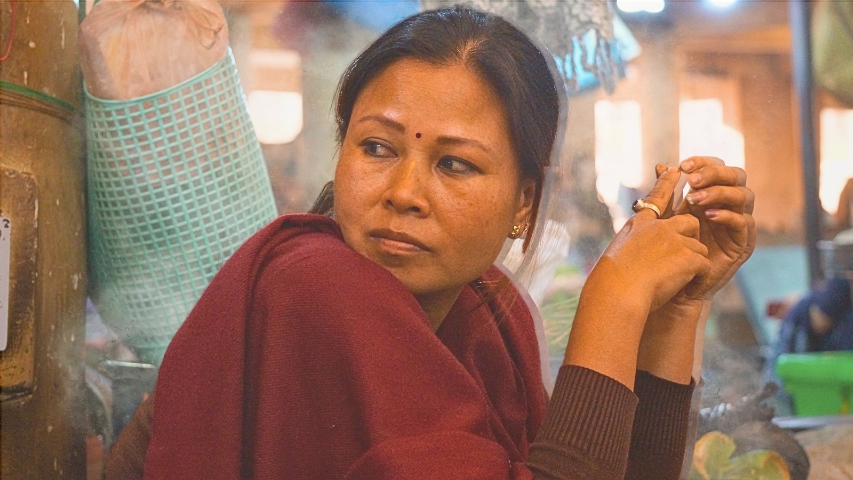
POLITICS: THE TOXIC HAZE OF INDIFFERENCE
by HUMRA QURAISHI November 17 2024, 12:00 am Estimated Reading Time: 5 mins, 19 secsExposing the smog of indifference: How government inaction, communal divides, and systemic neglect throttle lives across India, leaving vulnerable citizens to battle crises alone. Humra Quraishi writes…
Photography: Vinta Nanda
The worsening air pollution in New Delhi, coupled with systemic neglect of relief camps in Manipur, exposes the grim realities of government inaction and exploitation. Vulnerable communities face the dual burden of toxic smog choking the capital and a lack of basic facilities in relief camps, highlighting the need for accountability and transparency. Amid this, divisive politics targeting marginalized groups, such as Rohingya refugees and Bangladeshi immigrants in Delhi's Najafgarh market, deepen communal rifts and distract from critical issues like public health and rehabilitation. It’s time to demand environmental justice, equitable aid distribution, and the restoration of normalcy for displaced citizens.
The Veil of Distrust: How Governments Exploit the Helpless Amid Crises
New Delhi, the heart of India, is choking—literally and figuratively. The city’s air pollution has spiralled into a catastrophe, blanketing the capital in a toxic haze that throttles lives, compromises respiratory systems, and silently kills the most vulnerable. Reports suggest that this suffocating smog is claiming lives at an alarming pace, pushing hundreds into the jaws of death.
Amid this public health emergency, the government appears indifferent. Instead of focusing on curbing pollution, we hear of unrelated mandates—like vegetable vendors in Najafgarh being forced to display their names and contact details on their carts. Ostensibly, this is a measure to "curb illegal immigrants," targeting Bangladeshi and Rohingya refugees. But the timing raises questions. Is this a distraction from the administration's failure to address the haze, or worse, a divisive ploy to stir communal tensions?
Distracting with Division: The Politics of Blame
Rather than tackling the root causes of the environmental crisis, the government seems intent on exacerbating social divisions. Forcing identification on vegetable vendors under the guise of national security appears less about governance and more about sowing seeds of mistrust. This strategy risks fuelling Hindu-Muslim conflicts, escalating violence, and diverting attention from pressing issues like air pollution and economic despair.
Such tactics reveal a disturbing pattern: exploitation of the powerless to maintain political dominance. The poor are left grappling with pollution-induced health crises while simultaneously navigating new layers of societal prejudice and vulnerability. The result is a populace too weak, fragmented, and desperate to challenge the political elite.
Manipur: The Human Cost of Neglect
Turning our gaze to Imphal in Manipur, the story takes a grimmer turn. Activist and academic Sandeep Pandey's recent report on relief camps exposes the stark inequalities and systemic neglect faced by displaced citizens. The discrepancies in aid—ranging from cash to basic supplies—are appalling. Some camps receive a meagre ₹80 per day per head, while others subsist on nothing but rice.
Even promises made during festivals remain unfulfilled, with no compensation for the loss of homes or livelihoods. Women in these camps have been assured sewing machines and livelihood training, yet tangible support is non-existent. Children’s education suffers as families struggle to pay school fees, often sacrificing food and hygiene essentials to prioritize their future.
The glaring absence of basic facilities, like adequate medical care, warm clothing, and even contact details for emergency services, highlights a shocking level of state neglect. Is this the India we boast of on global platforms—a nation where displaced citizens are left to fend for themselves while the government turns a blind eye?

Institutionalized Inequality: A Crisis Manufactured by Design
The suffering of Manipur's displaced communities is not accidental; it reflects a deeper, systemic design to maintain inequality. Relief efforts, instead of uniting and uplifting, have become a mirror of the inequities that plague our governance structures. By failing to provide consistent aid, the government effectively pits one camp against another, causing resentment and helplessness.
The lack of urgency in restoring normalcy compounds the crisis. Families torn apart by displacement yearn to return to their villages, but threats of violence loom large. The tragic case of Leichongbam Ibemcha, who was killed while attempting to return to her home, speaks loud and clearly of the grim reality of life for Manipur’s displaced.
Despite these mounting crises, we are inundated with rhetoric about India’s progress. Yet, the realities on the ground paint a starkly different picture. The haze choking Delhi, the plight of displaced citizens in Manipur, and the communal strife brewing in Najafgarh are not signs of progress but of a nation adrift.
The political elite seem more invested in crafting narratives of economic growth and technological advancements than in addressing these human tragedies. This disconnect between speech and action is emblematic of a governance style that prioritizes power over people.
The Cost of Distraction: Who Pays the Price?
By diverting attention to communal issues and targeting marginalized communities, the government seeks to suppress dissent and evade accountability. The cost of this strategy, however, is borne by the most vulnerable—those choking on Delhi’s polluted air, those languishing in relief camps, and those caught in the crossfire of manufactured social divides.
This exploitation serves a dual purpose: it weakens resistance from the oppressed while strengthening the political dominance of the ruling elite. In the process, the promise of a united, progressive India fades into the smog that now blankets its capital.
The crises unfolding across India demand urgent attention and action, not distractions. Addressing Delhi’s air pollution requires coordinated efforts across states to curb emissions, invest in sustainable practices, and ensure public health. Supporting displaced citizens in Manipur calls for equitable distribution of resources, compensation for losses, and a roadmap to restore normalcy.
Time to Demand Accountability
Above all, it is time to question the divisive tactics employed by those in power. Why is communal discord prioritized over collective progress? Why are vulnerable populations targeted instead of supported? The answers to these questions lie in the very structure of our governance—a system that thrives on division and distraction.
The haze engulfing Delhi and the neglect in Manipur are symptomatic of a deeper malaise—the exploitation of innocent citizens by those in power. Yet, history shows that no regime can suppress the collective will of the people indefinitely. It is up to us, as citizens, to demand transparency, accountability, and action.





-173X130.jpg)

-173X130.jpg)

-173X130.jpg)
-173X130.jpg)

